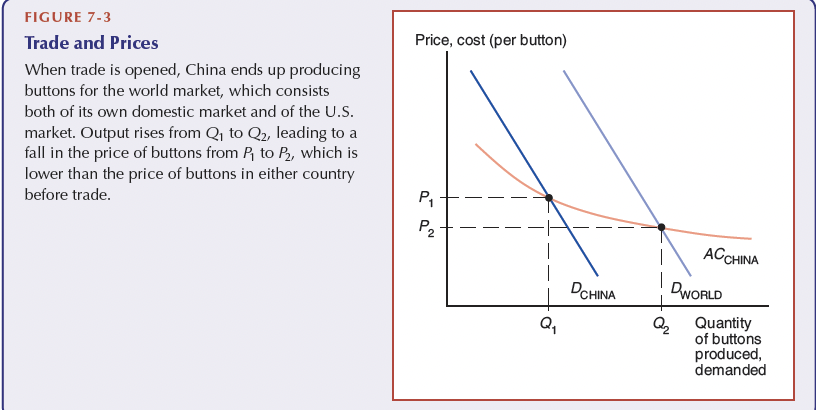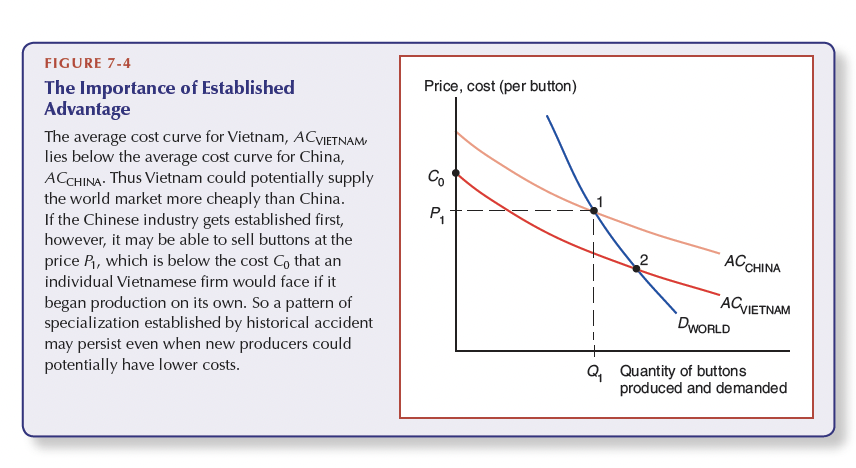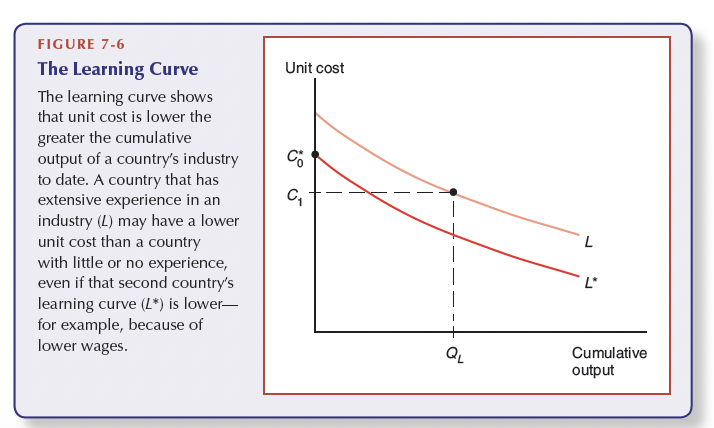Chapter 7: External returns to scale
0.0(0)
0.0(0)
Card Sorting
1/11
Earn XP
Description and Tags
Study Analytics
Name | Mastery | Learn | Test | Matching | Spaced |
|---|
No study sessions yet.
12 Terms
1
New cards
External increasing returns to scale
looking at the number of firms in the market
When the industry size increasing, so will the efficiency
When the industry size increasing, so will the efficiency
2
New cards
When will firms enter the makets?
They will enter the market up until the point where there is no profit
3
New cards
Average cost
total cost for all units produced divided by the number of units
Downward sloping curve as it decrease as the number of units increase
Downward sloping curve as it decrease as the number of units increase
4
New cards
Increasing returns to scale
When production quantity increases, the average price of producing will decrease (same as economies of scale)
5
New cards
Specialised suppliers
And individual company can not provide a large enough market. A localised industrial cluster will solve this by bringing together many suppliers to create a big enough market to support another market
(think of Silicon Valley as suppliers to the tech industry)
key inputs will be cheaper as many firms compete to provide them
(think of Silicon Valley as suppliers to the tech industry)
key inputs will be cheaper as many firms compete to provide them
6
New cards
Labour Market Pooling
A cluster of firms can create a pooled market for workers with the right skills.
Is an advantage to both workers and producers
Is an advantage to both workers and producers
7
New cards
Knowledge spillover
Firms can learn from the other firms in their industry. Happens when industries are located in a cluster.
8
New cards
Equilibrium
AC=QD
9
New cards
Free trade with external economies of scale
The country with the lower AC curve will expand (output increase and AC decrease). World prices will decrease
The country with the higher AC will contract and import the good.
The country with the higher AC will contract and import the good.

10
New cards
Patterns of trade
Comparative advantage explains some of it (the price of labour/capital, technology).
Historical contingency → Tradition → established advantage in an industry (think Switzerland and watches)
- A single firm with lower prices cannot compete with an entire industry
Historical contingency → Tradition → established advantage in an industry (think Switzerland and watches)
- A single firm with lower prices cannot compete with an entire industry

11
New cards
Dynamic increasing returns
learning curve
As one firm improves its products, other firms will learn from that → The entire industry becomes more efficient → increase the cumulative output
An industry with more knowledge might have a higher learning curve than an industry with no knowledge. The other industry has lower production costs (lower wages etc) but less production experience.
As one firm improves its products, other firms will learn from that → The entire industry becomes more efficient → increase the cumulative output
An industry with more knowledge might have a higher learning curve than an industry with no knowledge. The other industry has lower production costs (lower wages etc) but less production experience.

12
New cards
Infant industry argument
new industries require protection from international competitors until they become mature, stable, and are able to be competitive. The infant industry argument is commonly used to justify domestic trade protectionism